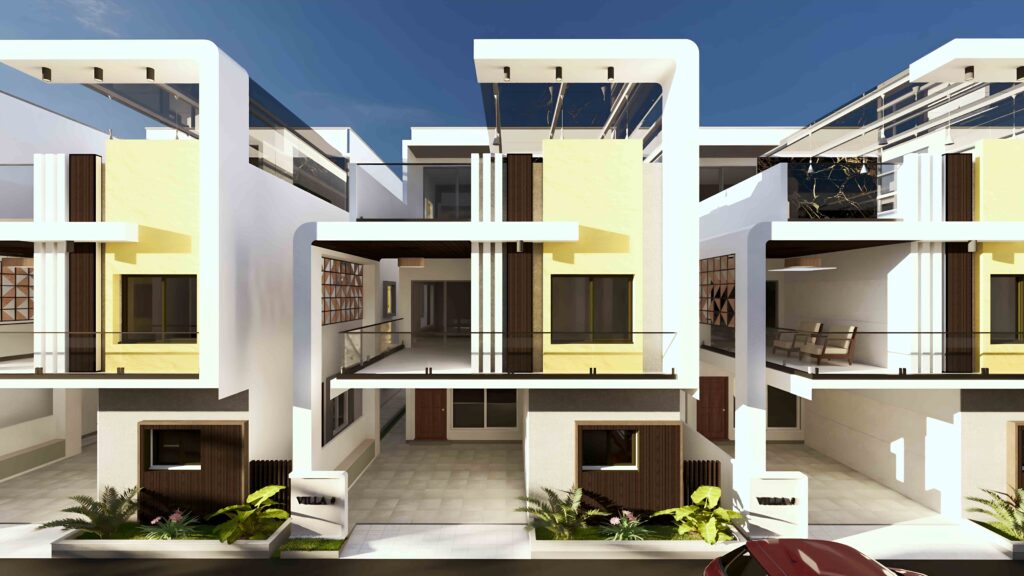Comprehending Carpet Area, Built-up Area, and Super Built-up Area
When you buy a house or invest in property, you should be aware of how the area is measured. Developers tend to refer to Carpet Area, Built-up Area, and Super Built-up Area, and it might leave you confused. You should be aware of the distinctions between them so that you can make the appropriate decision and get the actual space for which you are paying.
Carpet Area – The Real Habitable Space
What is Carpet Area?
Carpet Area means the actual usable area in the house which may be carpeted. All rooms such as bedroom, living room, kitchen, and bathrooms fall under the Carpet Area, but not the thickness of walls, balconies, and also not common areas such as lobbies or staircases.
For instance, if an apartment is mentioned as 1,200 square feet in Super Built-up Area, the Carpet Area can be as low as 800 to 850 square feet.
Why is Carpet Area Important?
Carpet Area is the most significant parameter for the home buyers since it is the usable space in the flat. According to the Real Estate Regulation and Development Act (RERA), Carpet Area needs to be disclosed by the builders in order to give transparency to the transactions of the property.
Carpet Area plus Balconies and Walls – Built-up Area
What is Built-up Area?
The Built-up Area is the Carpet Area plus the thickness of the walls, the thickness of the balconies, and the thickness of the other covered portions. It is usually 10-20% more than the Carpet Area as it covers the space of the walls and other structural elements.
For example, if Carpet Area is 850 square feet, the Built-up Area may be around 1,000 square feet after considering walls and balconies.
Why is Built-up Area Important?
Although the Built-up Area is a greater measurement of the property, all that falls within it is not usable. The space lost to wall thickness and exterior structures diminishes the available space to be occupied.
Super Built-up Area – Saleable Area Including Spaces Common
What is Super Built-up Area?
Area Super Built-up Area is the Built-up Area and a reasonable proportion of common areas like corridors, staircases, lobbies, lifts, and other common facilities like clubhouses and swimming pools. Builders love to market with something called Built-Up Area or built-up space. Sometimes it sounds confusing because “built-up space” usually means something that’s new and modern. But anyway, housing sellers and marketers tend to inflate the built-up space to look bigger and attractive to buyers rather than focusing on just usable space because buyers tend to think that a bigger absolute square footage means that the building has a better size and layout.
For instance, if a builder is offering a flat as 1,200 square feet of Super Built-up Area, then the Carpet Area would be only 800-850 square feet, and the remaining 350-400 square feet would be for walls, balconies, and common areas.
Why Super Built-up Area Matters
Since the Super Built-up Area also includes common areas, it does not reflect the usable area in the apartment. Therefore, while comparing the houses, the buyers should always ask for the Carpet Area and not the Super Built-up area.
Why Buyers Should Care to Understand These Terms
When people are buying houses, one of the biggest things they get wrong is using ‘super built-up area’ which is misleading. What they should really think about is how they’re actually going to use what they buy. Builders put their bid on the “SFC” (Super Built Up Area) and this could be a bit misleading if the buyer doesn’t double check that the actual Carpet Area is in fact being promised.
You might find two apartments that both are advertised as covering 1200 square feet metres as they call it down there. Now let’s say the first one offers actual domestic floor space of 850 square feet and that the second one can only afford 800. So the one that fills the house is going to cost you more, but leave you with a lot more real space to work with. Let’s face the facts, you don’t just want how big a room is advertised but how much space inside you actually get to fill.
Also, loading factor is the difference between the Super Built-up Area and the Carpet Area. The higher the loading factor, the more common areas you pay for and the lower usable space you receive. Ideally, the buyer should purchase a property with a lower loading factor to receive the maximum space for living.
Top Takeaways for Homebuyers
Carpet Area is the most important measurement as it is the available area in the apartment. Carpet Area includes the Carpet Area plus the walls and balconies and is 10-20% greater than the Carpet Area. Super Built-up Area is the largest measurement since it includes the Built-up Area and common areas like corridors, lifts, and staircases. Developers quote on the basis of Super Built-up Area, but the buyer must be careful about the Carpet Area to have a more realistic estimate of the area that can be used. Always check the RERA Carpet Area, as the developers are legally obligated to give it for transparency. 6. Final Thoughts Having an idea about Carpet Area, Built-up Area, and Super Built-up Area allows home buyers to make educated investment decisions. Instead of being fooled by increased numbers in promotion pamphlets, always ask for Carpet Area so you know the amount of area you are really getting. At SSP Group, we are offering complete transparency in property transactions and help buyers buy property with the most usable space. If you require professional guidance to choose the perfect home, don’t delay and get in touch with us today for customized guidance.
Ready to make a smarter property decision? Discover the space that truly matters today!



















